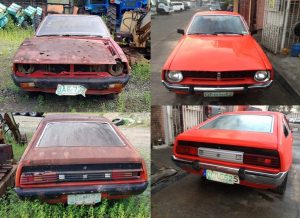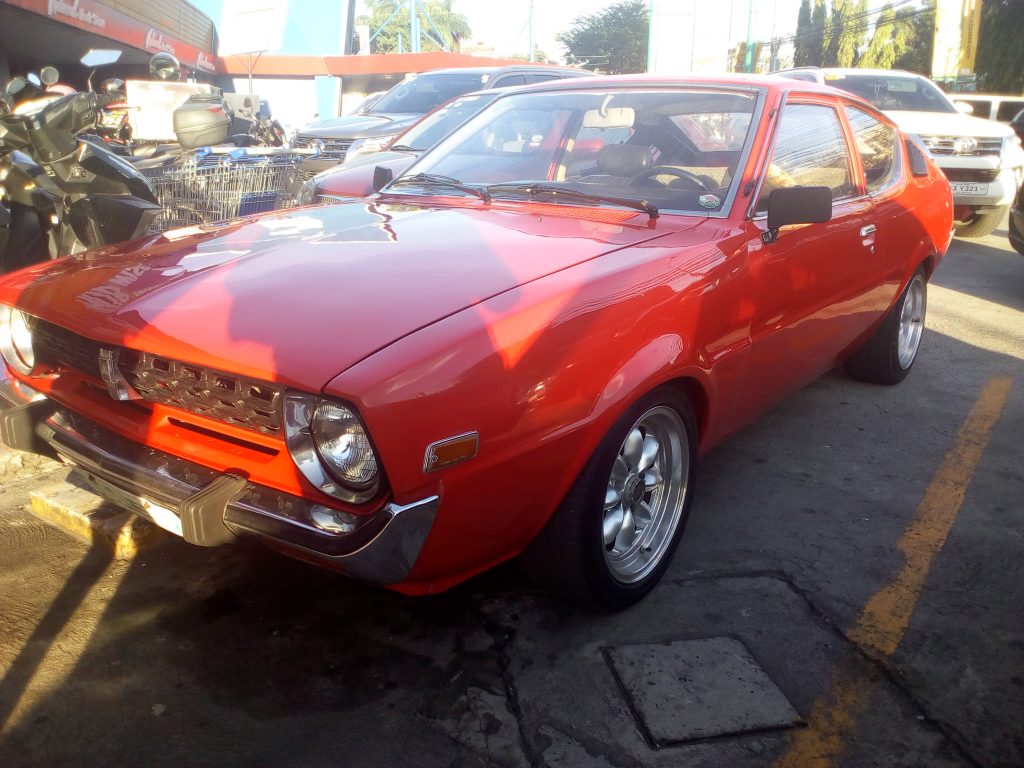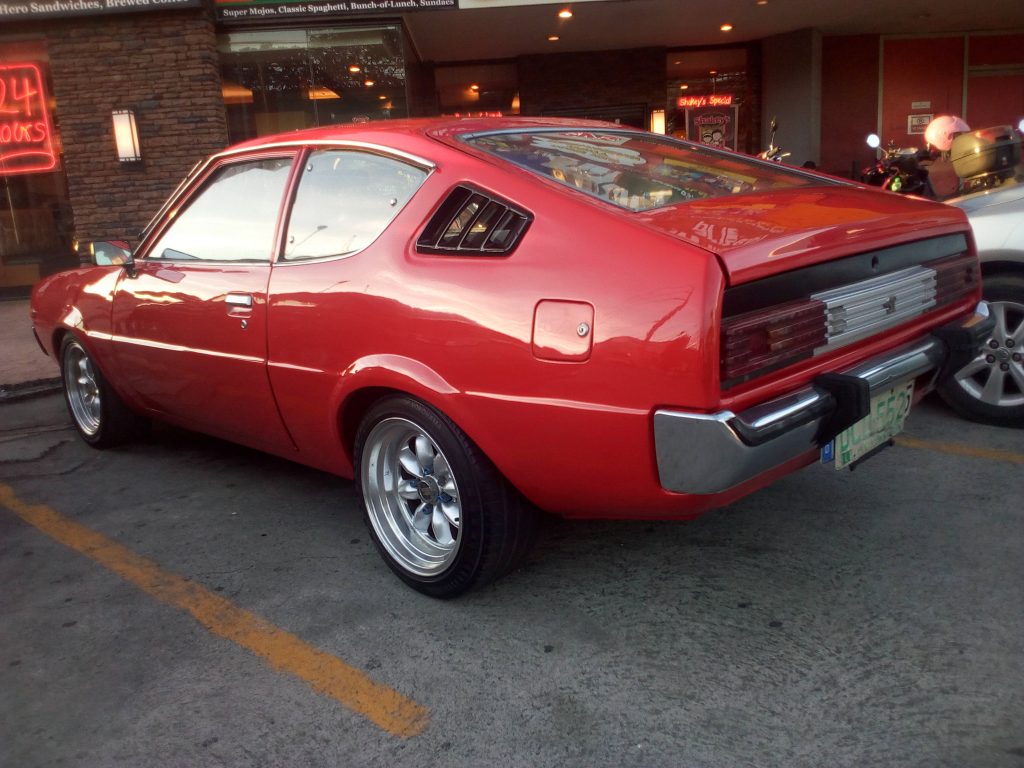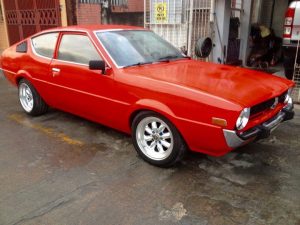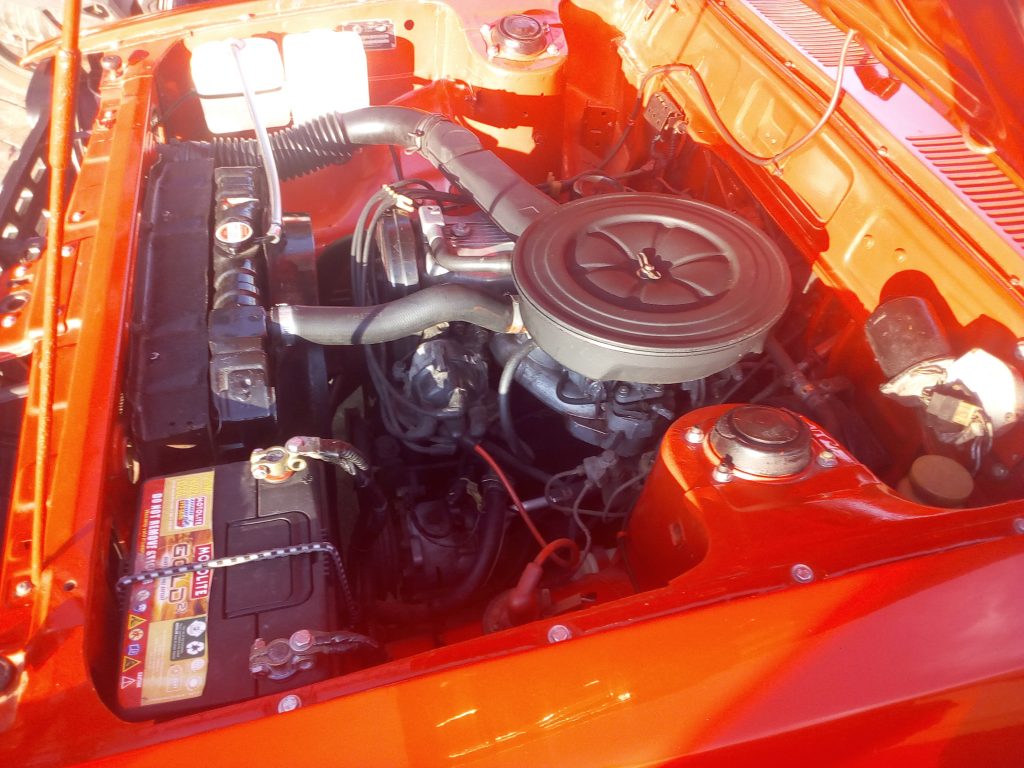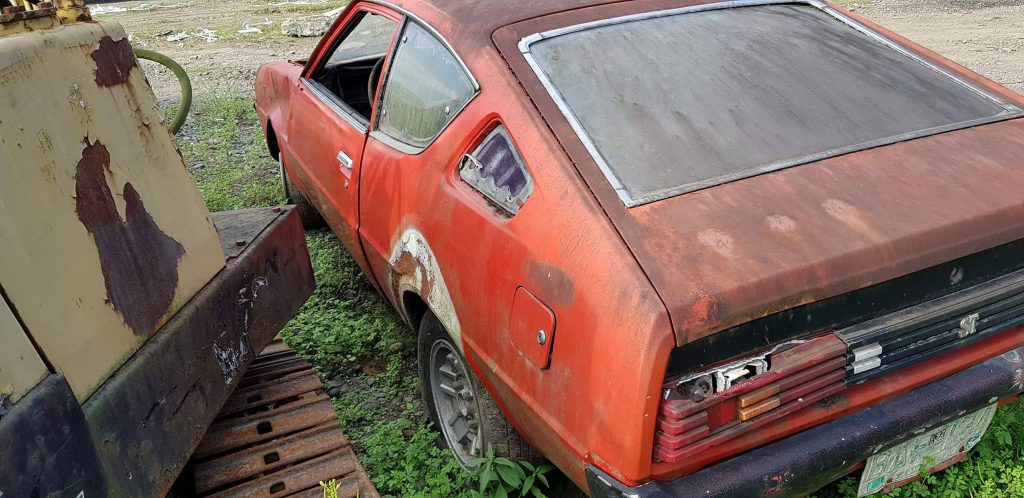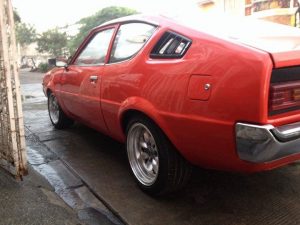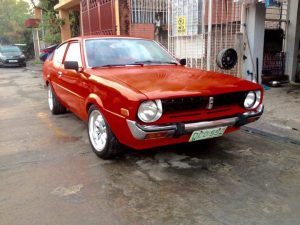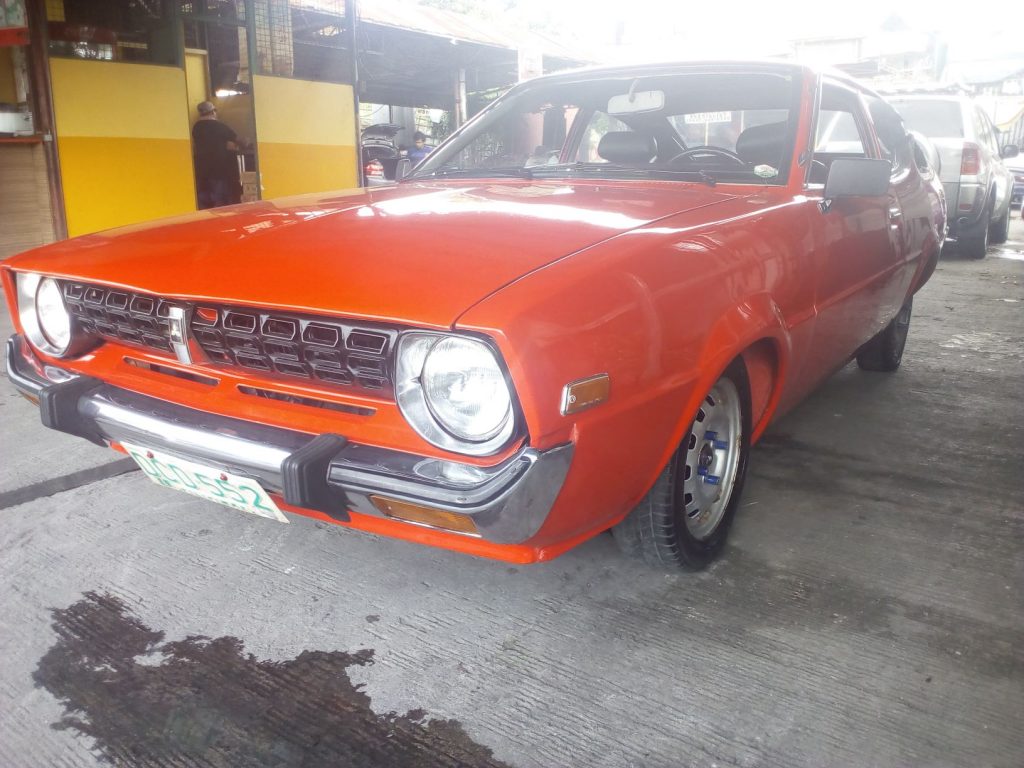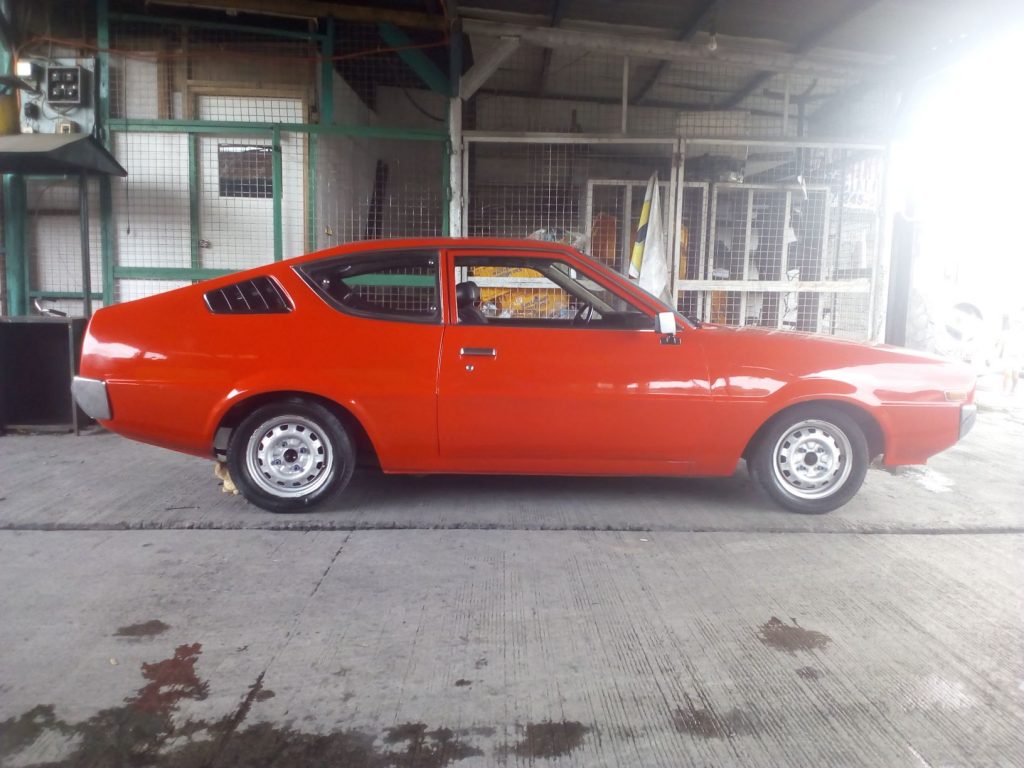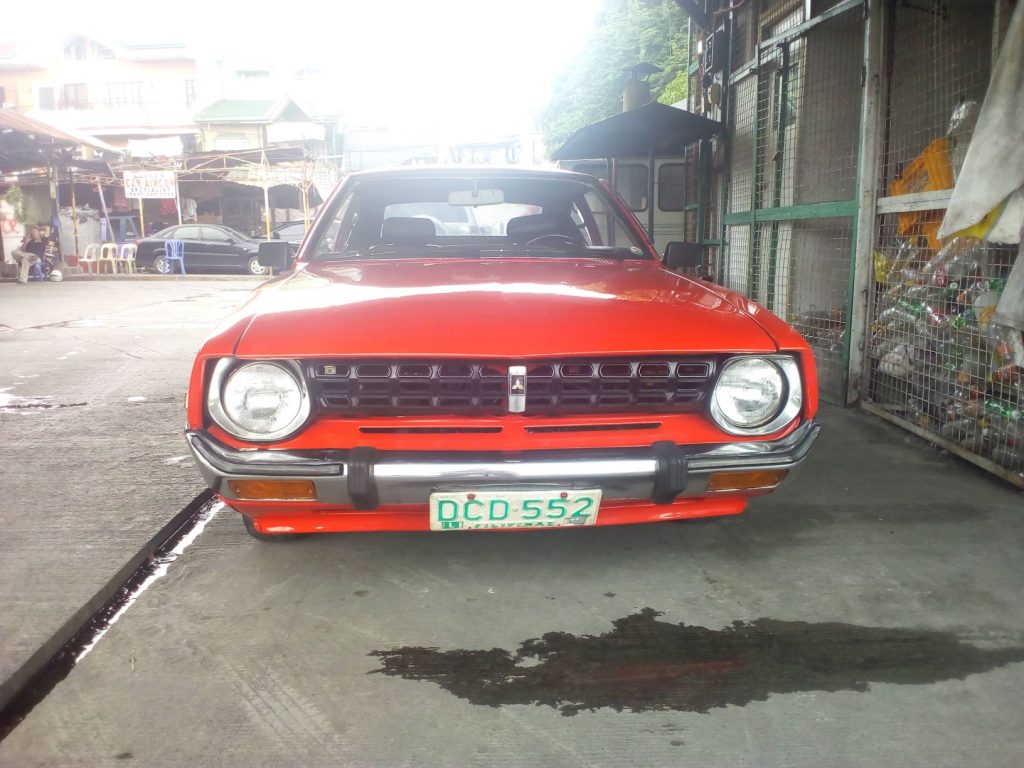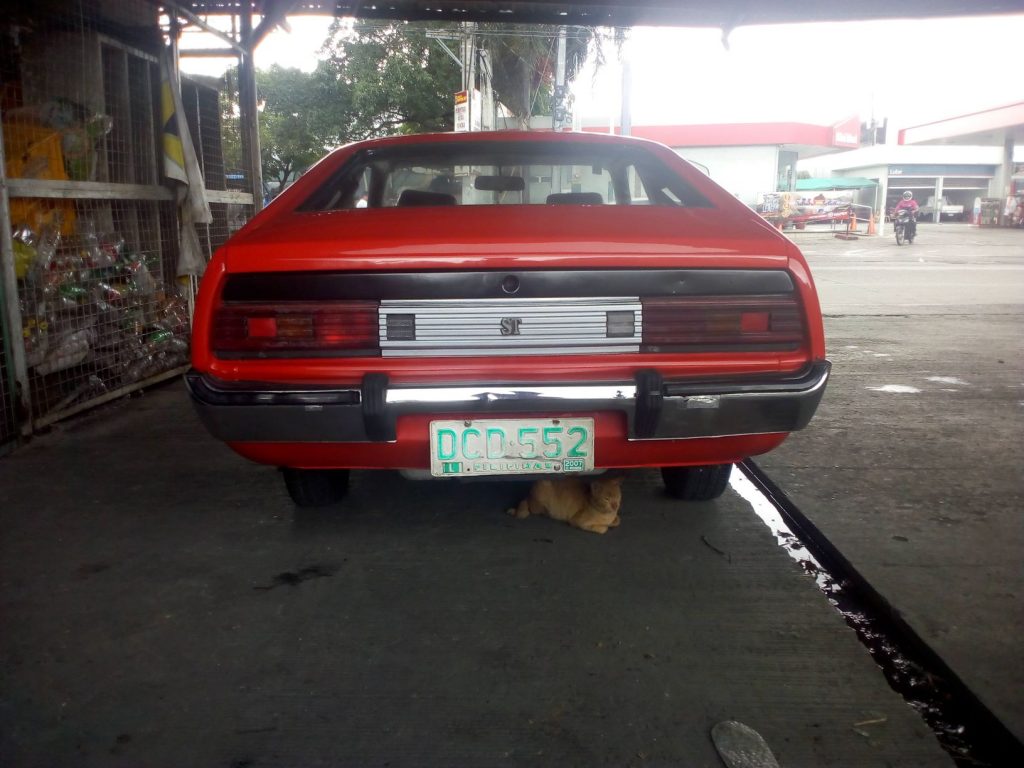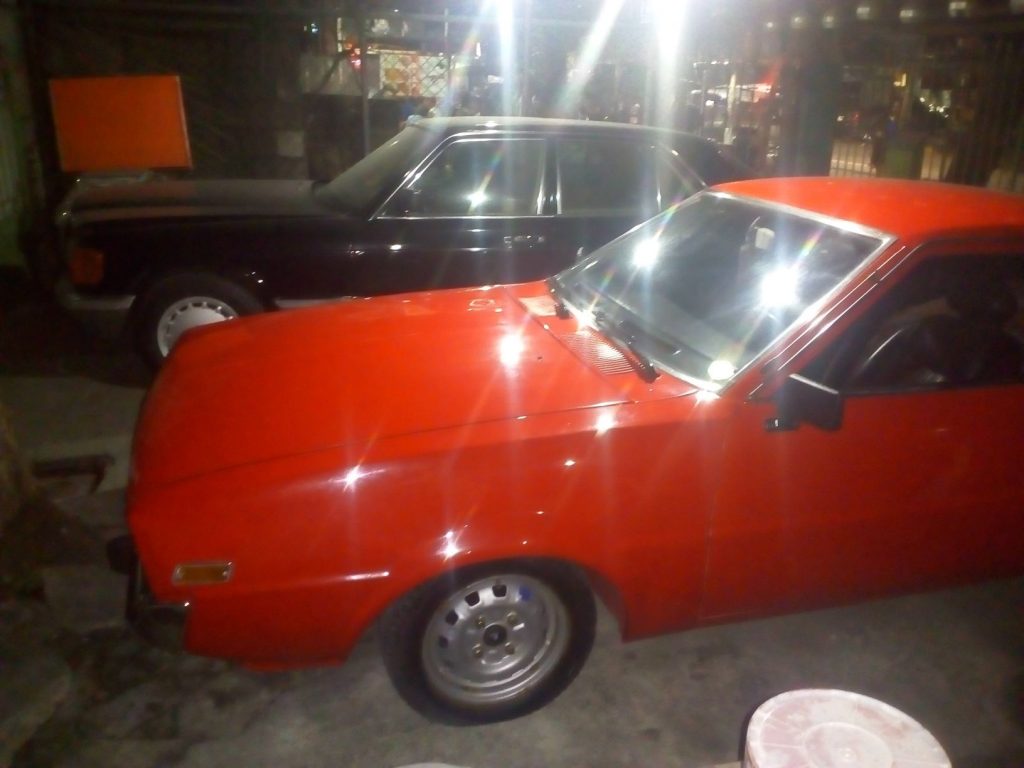Previously, in Part 2 of our Power Wheels Magazine Project Car series, we found a donor Celeste that we thought may have been a bit too nice to disassemble and harvest parts for the 1976 Mitsubishi Celeste 1600ST (BAF-734) owned by Roberto “Bob” Alingog, that we’re helping restore with Bob’s thoughtful son, Aldous Rex Alingog. Aldous wants to restore the ’76 Celeste as a present for his father’s birthday, which is just a few short months away. However, when Aldous saw how awfully deteriorated his father’s red Celeste was, he knew that restoring it piece-by-piece will take too long and that it won’t be finished by his father’s birthday. Thus, he reluctantly agreed to look for a donor car instead.
When Aldous saw pictures of the 1978 Celeste (DCD-552) that we found in Sucat, Parañaque, he immediately looked at it as a “short cut“. He initially saw that we could save time by just polishing the paint, cleaning the interior, and debugging the car’s mechanical and electrical components before presenting it to his dad on his birthday. We could be done months in advance. But because DCD-552 (the red ’78 Celeste) does not have the provenance of, the family history, and the memories generated in BAF-734 (Bob’s red ’76 Celeste), Aldous opined that going through the “short cut” with the donor car would not be ideal. We gave Aldous some time to weigh things before we took the next step.
Pros and Cons of Donor Cars
Like anything else, there are advantages and disadvantages to using a donor car when you’re restoring a classic. Let’s list down the the disadvantages first:
- What you see is what you get (WYSIWYG). The donor car you’ll be getting will be almost as old as the car you’re restoring thus, the parts you intend to harvest may also be brittle, perished, or deteriorated because of age. In our case, the ’78 Celeste donor car was already 40 years old in 2018 and just two years younger than the ’76 Celeste we were restoring.
- Looks can be deceiving. Some sellers make the paint glisten, polish all the bright chrome parts and all the glass, and install shiny wheels on the cars they’re trying to sell because buyers easily get attracted to the car’s looks and immediately part with their money. In our case, we were quite taken by the condition of the ’78 Celeste when it was presented to us.
- It is not the same car you’re restoring. Bob’s ’76 Celeste and the ’78 Celeste donor car may be similar cars, and even almost identical, but they are NOT the same. As we mentioned above, Bob’s ’76 Celeste has provenance, history and memories attached to it while the ’78 donor car means nothing to the Alingog family.
However, when you are pressed for time because you have a deadline or you need to finish the car on a specific target date, then there are advantages to getting a donor car. Let us enumerate these advantages:
- You’ll have most of the parts you’ll need all at once. Getting a donor car will get you all the parts you need, especially the small parts and trim pieces that are no longer available. Bob’s ’76 Celeste needs a solid monocoque chassis, body panels, chrome trim, front and rear bumpers, front grille and rear valance, interior components, and most of all, a working engine and transmission.
- It’ll save you time and money. Buying a whole car with complete parts will save you time and effort searching, hunting, and inspecting all those parts individually. Money is also saved when you get all the components you need in one complete package instead of paying for each part piecemeal.
- You can store or sell the parts you won’t use. After harvesting the good parts from the donor car, you can just keep or sell the parts that are still good but won’t be used in your project car. Keeping the the unused parts means you have spare parts in case the installed part breaks down. Selling the unused parts can help you recoup some of the money you are spending on the restoration process.
Other Considerations
Aldous thought long and hard of whether or not we should get the donor car. He looked at his dad’s car and realized that it will take a lot of work to bring it back to what it once was. The chassis would have to be gutted and then new metal would have to be fabricated to replace the rotted ones. All the body panels including the roof and rear quarter panels need to be massaged and rid of rust. Some panels like the hood, doors, fenders, and rear hatch will have to be replaced. New bumpers will have to be located and purchased. The engine, transmission, driveshaft, differential, suspension and brakes will all have to be overhauled. The interior will need to be replaced with new seats, dashboard, carpet, headliner, visors, door cards, carpets, and all those other small trim pieces. He’s not sure if we’ll find new problems and more rotted or broken components once we start dismantling his father’s ’76 Celeste. It would really take a lot of work to restore his dad’s car.
On the other hand, the ’78 Celeste donor car won’t need a lot of work and it can be finished before his father’s birthday. But it won’t be his dad’s old car and that’s what bugs him. What Aldous really wanted was to give back to his father all the good memories and all the fun they had in BAF-734. He wanted to give his father a time machine to take Bob back to when he was 24 or 25, a young man who bought a shiny red sporty car to impress the most beautiful lady he’d seen in his life. Aldous wanted to present his father with the very car that Bob bought brand-new in 1976 from his own earnings as an up-and-coming self-made entrepreneur. After Aldous shared with us his reasons for the restoring the Celeste, we presented him with a proposition: we can turn DCD-552 into BAF-734.
Pulling the Trigger
Aldous liked what he heard. We will get the nice ’78 Celeste donor car (DCD-552) and turn it into Bob’s beloved ’76 Celeste (BAF-734). Since his father’s old car has turned into a rusted heap, all we can salvage from it is its Vehicle Identification Number (VIN) plate that is riveted on to the inner right shock tower in the engine bay. Japanese cars of these vintage do not have the chassis number stamped on the body itself so by simply transferring the VIN plate of BAF-734 to DCD-552, the ’78 donor car will officially and legally become the ’76 Celeste. Then, we will check the mechanical parts thoroughly, fix what’s needed to be fixed, give the engine a tune-up, top-up all fluids, and then file a “Change Engine” declaration for BAF-734 when renewing its registration with the Land Transportation Office (LTO) using DCD-552’s LTO documents as the source or donor of the new engine. Thus, the finished restored Celeste will be legally registered as BAF-734 with the LTO.
After two weeks and a lot of thought, Aldous pulled the trigger and directed us to acquire the ’78 Celeste. However, since we were planning to restore the original 13-inch alloy wheels from Bob’s ’76 Celeste to maintain the factory look like when it was brand-new, we asked the seller to replace the 15-inch banana-type mag wheels with the standard 13-inch wheels so we can drive the car home. Because the set of 15-inch wheels were worth around P10,000, we asked the seller to deduct it from the asking price, which further lowered our acquisition cost. Thus, on July 12, 2018, we were able to acquire DCD-552 for a reasonable price and, instead of having it delivered on a flatbed truck, we elected to drive it from Parañaque to Manila.
Taking A 40-Year-Old Home
Looking at the ’78 Celeste donor car with the small 13-inch steel rims and puny 165/70R13 tires, we were amazed at what a big difference the wheels made to the look and stance of the car. Because of the smaller wheels, the car now looks lower and slammed to the ground. Upon closer inspection, we saw some waves in the paint work, indicating that there are some body fillers underneath that shiny red paint. When we first met with the seller, we didn’t notice that the right headlamp was not properly aligned and that the rear bumper had a hole that was covered with a square foil that looked to be part of an old sticker. We only noticed it now that we have already paid for the car. Oh, well… at least, this Celeste is complete.
The Celeste was idling and running quite well when we left the seller’s place but after a few kilometers, it stalled and wouldn’t start. Thankfully, the seller was just driving ahead while guiding us through a short cut, so he was able to turn back, get his mechanic ,and have the engine fixed. The mechanic traced the problem to the contact point inside the distributor, which developed some blisters since the Celeste has been sitting unused for quite some time. After some fiddling and attempts to start the engine, the battery became drained and too weak to turn the engine. We connected jumper cables to the seller’s vehicle and after a few tries, the Celeste’s engine finally sputtered back to life. We let it idle and charge the battery for a while before we drove out of Parañaque.
The Long and Winding Road
We crawled in heavy home-bound rush hour traffic on Sucat Road until we got into Roxas Boulevard. When we reached speeds above 30 km/h, we could feel that the car was wiggling and we immediately attributed the problem to the 13-inch tires, which seemed like they were not balanced before they were mounted. The wiggling became even more pronounced as we hit speeds above 50 km/h and drivers of other vehicles would drive alongside and point to our car’s wiggling wheels. Since we didn’t bring any tools with us because we took the bus to pick up the Celeste, we just drove slowly, not exceeding 50 km/h, while praying and hoping that we can make it home in one piece. Or without needing a tow truck…
After countless beads of sweat, crossed fingers, and a lot of prayers, we finally reached our destination – our garage in Manila where the Celeste will be parked temporarily while we evaluate it and list down the things we have to do, parts we have to replace, and problems we have to fix. We immediately tackled the wiggling problem when we got home only to find that it was caused by loose and improperly tightened wheel nuts. Apparently, whoever changed the wheels from the 15-inch mags to the 13-inch steel rims forgot to tighten the lug nuts after lowering the car back to the ground. Boy! Was I lucky to get home without the wheels detaching themselves from the hubs! Thank God for small favors!
Log in again for Part 4 of our Power Wheels Project Car series on restoring Bob Alingog’s 1976 Mitsubishi Celeste 1600ST. Stay tuned!
 Power Wheels Magazine A Notch Above
Power Wheels Magazine A Notch Above

